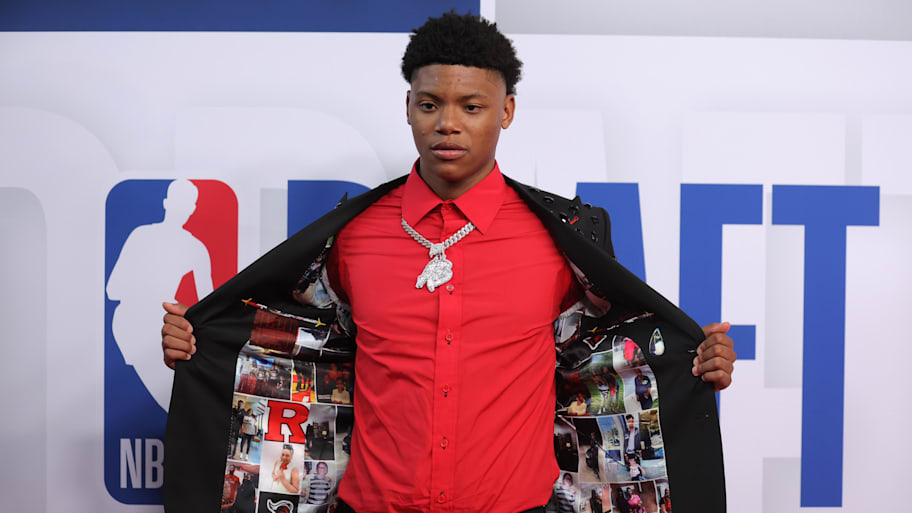The 2025 NBA draft proved an eventful affair. The first half of the lottery didn’t provide much in the way of drama outside of Ace Bailey ending up with the Utah Jazz, but things really kicked into gear as the night went on. There were numerous trades (some wise, some not), more than a few surprising selections and in general, a lot of NBA draft night action.
When the dust finally settled late Wednesday night, there emerged a clear set of winners and losers from the events of the evening. Here we’ll dive into the teams who benefitted the most from the draft—and the teams who may look back on this night with great regret.
Winners
Dallas Mavericks
Obviously the Mavs are the biggest winners of the night by far. Against significant odds, the lottery fell in their favor, gifting Dallas the right to pick first overall on Wednesday night. There was only one choice to make, and they made it, taking Cooper Flagg out of Duke. Flagg is one of the best prospects to enter the draft in the last decade and will be warmly welcomed by a Mavericks fan base desperate for some good news.
It wasn’t a given the Mavericks would take Flagg. Nobody thought general manager Nico Harrison would ever, in a million years, trade Luka Doncic—but he did. Harrison didn’t choose the chaotic path this time, though, and stuck with Flagg. However the franchise’s near future shakes out, however well or poorly Harrison’s decision to ship Doncic out ages, Flagg should serve as the foundation for contention for a very long time in Dallas. A huge night for the organization, and Flagg’s NBA journey is officially underway.

San Antonio Spurs
The Spurs didn’t do anything crazy with their two first-round picks on Wednesday night, but they used them well. They picked Dylan Harper at No. 2, as expected, and then nabbed Carter Bryant at No. 14. Both players come to San Antonio looking like great fits with their young core.
Harper makes the backcourt a bit crowded, but his ballhandling skills will allow Rookie of the Year Stephon Castle to further blossom in other areas of his game and both could learn a lot next to De’Aaron Fox. Bryant, meanwhile, is one of the top 3-and-D prospects in the draft with the length and athleticism to defend multiple positions; he shot 37.1% from three at Arizona, albeit on very few attempts and coming off the bench. He may not have made sense for teams looking for huge upside, but San Antonio just needs guys who make sense next to generational talent Victor Wembanyama, and Bryant definitely qualifies.
Sometimes teams just have to go chalk to emerge as winners. Such was the case with the Spurs this year. The core is coming along beautifully in San Antonio.
Miami Heat
Every year some team gets lucky when a widely accepted lottery prospect takes an unexpected tumble down the draft board. Many of those years it feels like that team is the Heat, and it happened again this season. Miami nabbed Illinois prospect Kasparas Jakucionis after he fell all the way to No. 20.
Jakucionis was seen as a possible high-end lottery selection at the beginning of the draft process, but his stock slowly chipped away as evaluators dug further into his game. Entering Wednesday, he was one of the prospects who had a wide range of outcomes but few analysts predicted he’d fall into the back half of the draft entirely. But he did, and the Heat are the benefactors as things stand.
The 6' 4" lead guard has great size at the point and demonstrated tremendous vision at times with the Fighting Illini. His lower-end athleticism is a concern, as is his inability to find his own shot. But the Heat desperately need to take home run swings with the team’s talent-barren roster right now, and Jakucionis is certainly that, even if he comes with a wider range of low-end outcomes than Miami would probably like.
International prospects
The rise of NIL in the college basketball realm has, among other things, led to a huge hit in NBA draft depth and it was really felt this year. Why would any mid-tier college prospect enter the draft with zero guarantees they’ll go in the first round before their eligibility is up instead of sticking around school to earn those sweet NIL dollars? It isn’t a hard decision for most players given the money getting thrown around at the collegiate level and how hard it is to land a second NBA contract outside the lottery.
The ripple effects of that are only just starting to be felt, but the 2025 draft showed the opportunity it provides for international players. Six players from overseas who didn’t play in the NCAA last year were selected on Wednesday night and four were picked in the second half of the first round, including one absolute wild card in Yang Hansen, the Portland Trail Blazers’ pick at 16. That’s something you can expect to see more of outside the lottery going forward; NBA teams are always willing to bet on youthful talent and the youthful talent available from international leagues is, currently, a lot deeper than what’s coming up in the college ranks.
Losers
Ace Bailey
Whatever Bailey’s master plan was throughout this draft process … it did not work. At all. Bailey’s refusal to work out or meet with teams, capped off by bailing on the Philadelphia 76ers a day before a planned draft visit, did not paint him in the best light as the draft approached. Then on draft night, Bailey got picked fifth by the Jazz, and ESPN’s Jonathan Givony immediately reported Utah was not one of Bailey’s preferred draft destinations (which Bailey later refuted). He also immediately reported the team will not be trading Bailey.
This could end up working out very well for Bailey given the Jazz’s dire need for scoring and lack of a clear top dog in the backcourt. And there’s undoubtedly plenty we do not know about Bailey’s plans behind the scenes, including whether he really did not have the Jazz as one of the teams he hoped to get drafted by. But on the surface it appears the former Rutgers star attempted to manipulate the draft process, made himself look bad to other NBA teams and quickly accumulated bad PR in the process, and still ended up getting picked by a team he doesn’t want to play for. Not exactly an ideal night for Bailey to kick off his NBA career.
Phoenix Suns
The Suns entered the draft in dire need of foundational players and armed with two first-rounders to do so, No. 10 and No. 29. So what do they do? They acquired two centers. Phoenix picked Khaman Maluach in the lottery and flipped the 29th pick, along with a 2029 first-rounder, to the Charlotte Hornets for Mark Williams. The Suns really needed to add talent in the frontcourt after shuffling through multiple substandard center options last season and then trading Kevin Durant ahead of the draft, but did they have to double-dip?
It is yet again a baffling allocation of resources from Mat Ishbia’s team, even under new stewards in the front office. Drafting Maluach is a dream scenario. Trading two first-round picks for a center who would be on the Los Angeles Lakers right now if he didn’t fail his physical in February is not.
New Orleans Pelicans
Well, Joe Dumars wasted zero time in making a splash as the new general manager of the Pelicans, huh? New Orleans jumped up 10 spots in the draft, trading with the Atlanta Hawks for the right to select Maryland’s Derik Queen with the No. 13 pick. That alone is not a terrible move given the Pelicans need depth in the frontcourt to prepare for Zion Williamson’s annual stretch of missed games and generally the roster needs talent. Queen is definitely that, even if his fit as an NBA player isn’t as clean as players usually drafted in this range.
However. The Pelicans traded their 2026 first-rounder to get the deal done—with no protections! If Queen doesn’t fit alongside Williamson, or a team led by those two and Jordan Poole ends up too porous defensively to win often (not unlikely), or any number of other things go wrong, New Orleans will owe its pick to the Hawks no matter what. It is an utterly massive risk to take on a good-but-not-great prospect in Queen who doesn’t project as a clean fit next to the franchise superstar in Williamson. There are a few ways this goes right and far, far more where it goes terribly wrong.
Brooklyn Nets
The Nets entered the draft with five first-round picks thanks to various wheelings and dealings in the last 12 months. It was a bit of a ridiculous cache and pretty much the entire NBA expected Brooklyn to move off at least one, if not two, of those picks. The 2025 draft class was seen as a bit top-heavy and even in a good draft it’s very tricky for an NBA team to successfully integrate that many rookies onto a roster at one time no matter how far the franchise might be from contention.
Brooklyn apparently doesn’t care about that at all. General manager Sean Marks used all five of the first-rounders instead. The Nets could have an entire new starting lineup made up of 2025 draft picks alone, if they desired. It seems like an inefficient use of resources and especially so considering where Marks invested those picks. The Nets added three guards (Egor Demin, Nolan Traore and Ben Saraf) a tweener wing (Drake Powell) and a small big (Danny Wolf) to their roster; there’s a lot of overlapping skill sets in there.
No team should be knocked for taking home run swings, but the Nets seemed to unnecessarily pin everything on this draft. Obviously, it could work out, but the odds are decidedly not in their favor given how many projects they selected and there are only so many minutes to spread around on the court. Maybe they didn’t have a choice, but adding five prospects to a fairly full roster seems far from the ideal scenario in Brooklyn even if a few end up stashed overseas.
More NBA draft on Sports Illustrated
This article was originally published on www.si.com as NBA Draft Winners and Losers: Ace Bailey’s Landing Spot, Nets’ Five First-Rounders.
